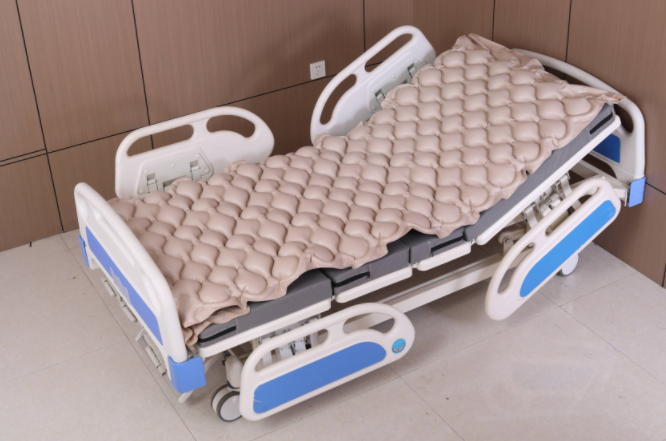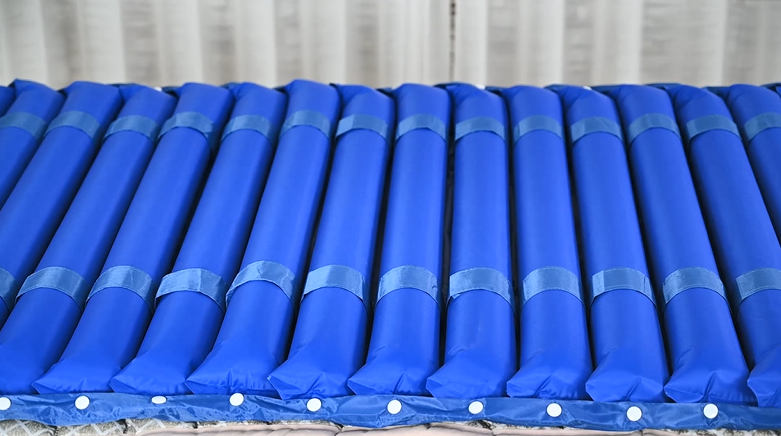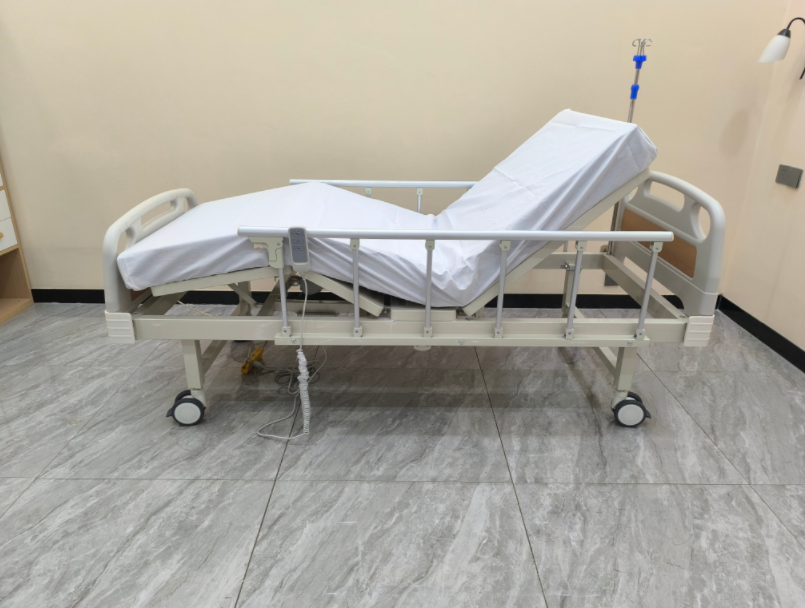Introduction
I believe picking the right hospital bed with mattress is vital for a patient. It affects their comfort, safety, and overall health. This is very important for people who must stay in bed for a long time. From what I’ve seen in my research, proper care and the right mattress can prevent most pressure ulcers. Studies show that between 80–95% of these sores are avoidable. I have also observed that hospitals track which departments request dynamic mattresses.In my opinion, this shows how important it is to choose the correct mattress to keep patients healthy and avoid problems.
How I Choose a Hospital Bed
Picking the right bed has a huge effect on patient recovery. It also makes things easier for caregivers. From my experience, these are the main things to look at:
Bed Type and Adjustability
Manual Hospital Beds: These are more affordable. You must use physical effort to adjust them. I suggest them for short-term use or if you have a tight budget.
Semi-Electric Beds: You can adjust the head and foot sections with a remote. The height is adjusted by hand. These offer a good mix of price and ease of use.
Fully Electric Beds: All adjustments, including height, head, and foot, are electronic. I believe these are the most helpful for patients who cannot move much. They also reduce the caregiver’s work.

Patient Needs and Comfort
First, I suggest you assess the patient’s individual needs. If they have a condition like congestive heart failure or chronic pulmonary disease, you need a bed that can raise the head section more than 30 degrees.
Think about the patient’s weight and how well they can move. Also, consider their risk of falling and if they need help to prevent pressure sores. These factors will tell you if a special or bariatric hospital bed is the right choice.
Safety Features
Side Rails: These help prevent falls. They also give support when a person gets in and out of bed.
Locking Wheels: These keep the bed stable. They ensure safety during use and transfers.
Emergency Controls: A quick response in urgent moments keeps patients safe.
I find that beds with simple control panels and easy-to-reach adjustments improve safety for patients and caregivers.
Ease of Use & Compatibility
I recommend looking for beds with simple, well-labeled controls. This is vital for both professional caregivers and family members at home.
You should confirm the hospital bed works with other needed items. This includes IV poles, patient lifts, or overbed tables. This helps improve care and gives the patient more independence.
Budget Considerations
Bed prices change based on the type and features. Manual beds are a budget-friendly choice. Electric and bariatric beds cost more. They do offer more adjustment options and capacity.
What you buy often depends on the facility’s needs and the budget for equipment.
In my opinion, matching these features to the patient’s medical and practical needs is the best approach. It creates a safe and comfortable space that helps people get better.
Mattress Features to Consider
From my experience, choosing the right hospital bed with mattress is crucial. I believe certain features have a big impact on a patient’s comfort, safety, and long-term health.
Mattress Types for Hospital Beds
Air Mattresses
You can adjust the firmness to fit each person’s comfort needs. This also helps spread out body pressure. I find this feature very important for patients who might get pressure sores. Keep in mind, the built-in air pump can make noise, and these mattresses are more expensive.

Hybrid Mattresses
These mattresses mix foam with layers of air or gel. I think this combination creates a good balance of support, pressure relief, and the ability to meet different needs. They are a great choice for many situations but may need some extra upkeep.
Gel Mattresses
Inside these mattresses, gel beads help keep the patient cool and manage the temperature. They spread body weight out to relieve pressure points well. I’ve noticed they are often heavier and more expensive.
Alternating Pressure Mattresses
Air pockets inside the mattress regularly fill with air and then release it. This creates a moving surface that relieves pressure. I recommend this type because it improves blood flow. It also helps stop sores from forming for patients who cannot move on their own.

Innerspring Mattresses
I find this is the mattress style most people know and can afford. The coils inside allow air to move, which cuts down on heat and moisture. The support they give helps stop ulcers from starting. In my opinion, they provide firmer support than many foam options.
Foam Mattresses
These are light and do not cost a lot. They have several foam layers that mold to the body and can help ease back pain. I should point out that they have less support and air circulation than innerspring or hybrid beds.
Support & Pressure Distribution
I suggest looking for high-density foam and mattresses with special pressure zones. These features ensure weight is spread out. This lowers the chance of getting pressure sores.
Some mattresses have extra features I like, such as sloped areas for the heels or firmer sections at the head and foot. These can give more protection to sensitive skin and tissue.
Patient-Specific Needs
In my experience, patients who stay in bed for long stretches or cannot move themselves need special attention. I recommend mattresses with alternating pressure, better airflow, and cooling features. This will lower the risk of bedsores and keep them from getting too hot.
Patients who need to be moved often or have a high chance of getting pressure ulcers do best with hybrid or alternating pressure mattresses. I suggest considering these types first for high-risk individuals.
I believe the best choice comes from matching the mattress to the patient. You should look at their ability to move, their medical risks, and what feels comfortable to them. This approach is the best way to prevent injuries and promote safety.
Conclusion: My Final Thoughts on Choosing the Right Hospital Bed and Mattress
From my experience, the right hospital bed and mattress are crucial. They have a big impact on a patient’s comfort, safety, and recovery. Based on the features we’ve covered, I’ve put together the most important points for you:
A Custom Fit: I suggest you match the bed and mattress to the patient’s specific needs. Think about their medical condition, how much they can move, and their risk for pressure sores. Research shows you can prevent 80-95% of these sores with the right care and bed surface.
Why the Mattress is Key: I believe a good mattress needs to offer solid support and spread out pressure well. It also has to be easy to clean. I recommend looking for features like dense foam, air-filled zones that change pressure, or gel beads. These things help stop bedsores and improve comfort for people in long-term care.
Bed Adjustments and Features: I suggest you look for beds that let you raise the head and feet easily. Semi-electric and electric hospital beds give you more options. They make life simpler for patients and the people caring for them. If the patient is heavier, check the weight limit. Some beds can hold 600 pounds or even more.
Focus on Safety and Ease of Use: I think side rails, wheels that lock, and simple controls are very important. They lower risks and make things more convenient. You should also check that the bed works with other gear like IV poles or lifts. This helps make care routines go smoothly.
Budget and Your Needs: For short-term use, I find that manual beds can save money. More advanced beds and mattresses cost more but give you better results. In my experience, hospitals can track requests for special mattresses. This helps them understand demand and give patients better care.
My Final Advice
Before you decide, I recommend you look at comfort, how well the patient can move, their health issues, and the cost.
I believe putting money into a good bed and mattress matched to the patient is a smart move. It can lower health problems, help people recover faster, and create a safer space for the patient and caregivers.

